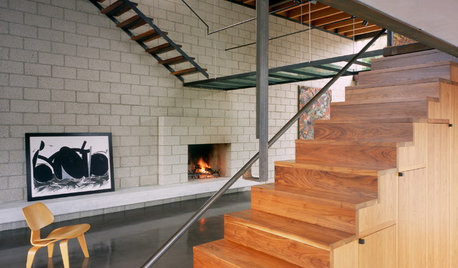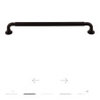Long-distance venting
ReginaLiz
13 years ago
Related Stories

FIREPLACESLong Mantels Go the Distance
Don't stop short by sticking on a candle and calling it a day. Long mantelpieces offer the chance to really stretch your style
Full Story
MOVINGRelocating Help: 8 Tips for a Happier Long-Distance Move
Trash bags, houseplants and a good cry all have their role when it comes to this major life change
Full Story
REMODELING GUIDESBridging the Distance Indoors
Airy interior bridges and walkways take getting around the house to a new level
Full Story
KITCHEN ISLANDSWhat to Consider With an Extra-Long Kitchen Island
More prep, seating and storage space? Check. But you’ll need to factor in traffic flow, seams and more when designing a long island
Full Story
KITCHEN DESIGNKitchen of the Week: Galley Kitchen Is Long on Style
Victorian-era details and French-bistro inspiration create an elegant custom look in this narrow space
Full Story
BOOKSBook to Know: 'Long Island Modernism 1930-1980'
Photographs mix with social history from the architectural highlights of Long Island's suburbanization
Full Story
ROOFSThis Long-Lasting Roofing Material Works With Many Styles
With their durability and wide range of colors and molded shapes, concrete roof tiles are worth a look
Full Story
INSIDE HOUZZHow Much Does a Remodel Cost, and How Long Does It Take?
The 2016 Houzz & Home survey asked 120,000 Houzzers about their renovation projects. Here’s what they said
Full Story
KITCHEN DESIGNKitchen of the Week: Warm and Industrial in New Hampshire
Generous helpings of wood keep white subway tile and cabinets from feeling cold in a kitchen redesigned long-distance
Full Story
PRODUCT PICKSGuest Picks: Settees for Every Room and Style
Tuck one of these smaller-than-a-sofa seats by a bed, in a niche or in a breakfast nook for comfort that goes the distance
Full Story







dapitou
kaseki
Related Professionals
Haslett Kitchen & Bathroom Designers · Rancho Mirage Kitchen & Bathroom Designers · Saint Peters Kitchen & Bathroom Designers · South Sioux City Kitchen & Bathroom Designers · Eagle Mountain Kitchen & Bathroom Remodelers · Beaverton Kitchen & Bathroom Remodelers · Beverly Hills Kitchen & Bathroom Remodelers · Boca Raton Kitchen & Bathroom Remodelers · Ewa Beach Kitchen & Bathroom Remodelers · Hunters Creek Kitchen & Bathroom Remodelers · Lomita Kitchen & Bathroom Remodelers · Vancouver Kitchen & Bathroom Remodelers · Bullhead City Cabinets & Cabinetry · Palos Verdes Estates Cabinets & Cabinetry · Plymouth Cabinets & Cabinetrydavidro1
dapitou
BrightFutureFoods
ReginaLizOriginal Author
dapitou
cj47
davidro1
ReginaLizOriginal Author
weedmeister
kaseki
lee676